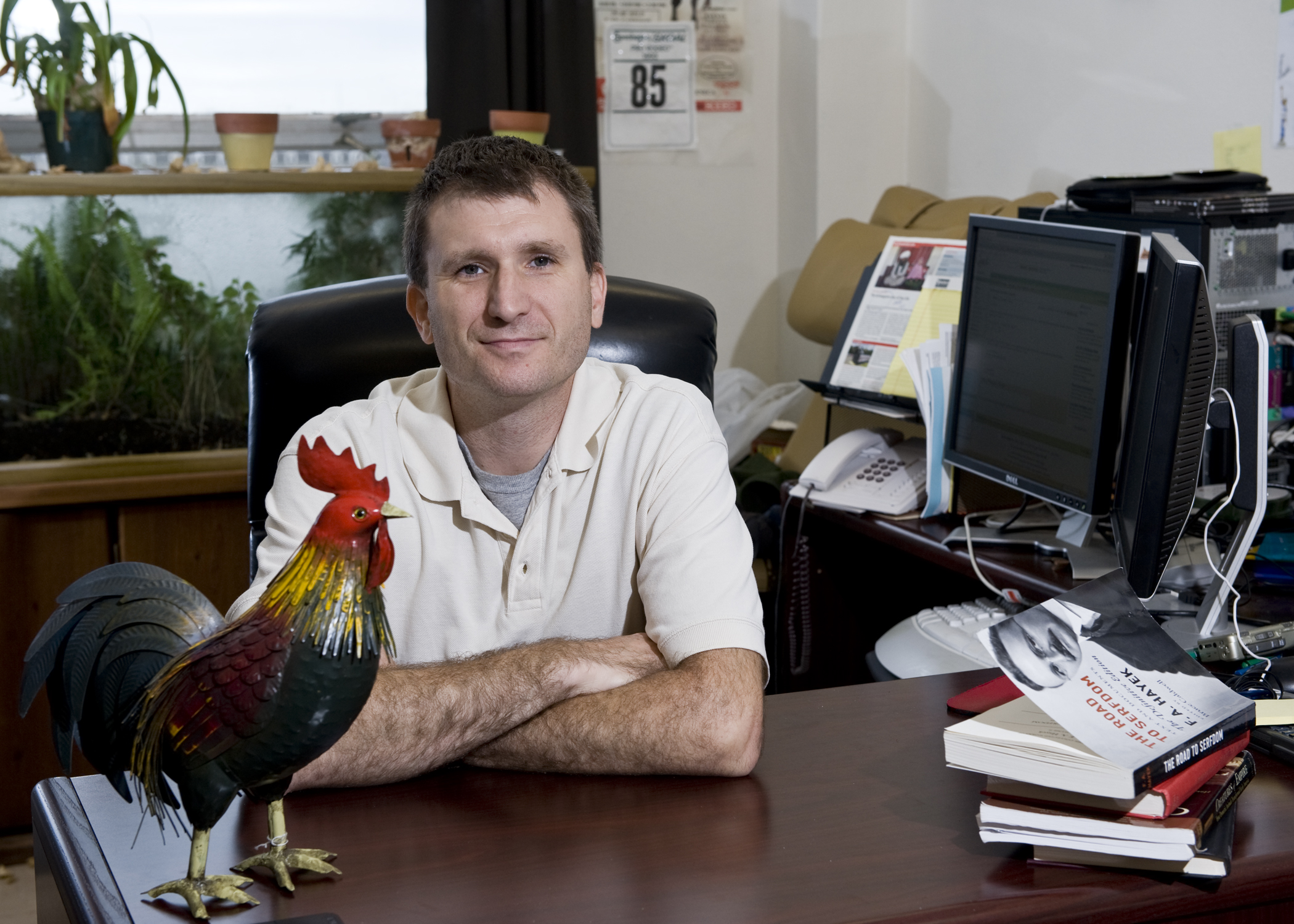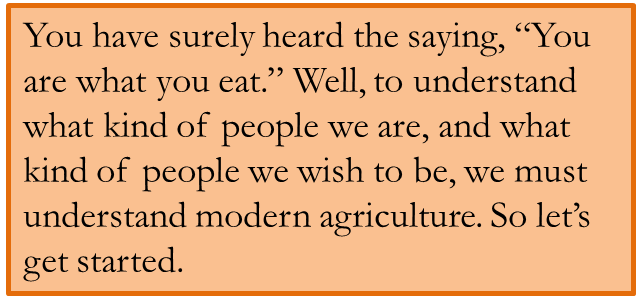

Understanding Modern Agriculture: Introduction
Greetings. On behalf of Oklahoma State University (OSU), and its College of Agricultural Sciences and Natural Resources, I welcome you. This is a course designed for people of all different backgrounds, from those who farm for a living to those who have never been on a farm. The material is accessible to high school or college students but hopefully enlightening even to those with graduate degrees in agriculture. Some parts of the course will be me giving lectures, but other parts will find us on a virtual field trip. To understand modern agriculture we must understand the advanced technologies used on today’s farms in the developed world, and the scientific principles behind them. This includes both the physical sciences and the social sciences.
Meet agricultural economist: Bailey Norwood, PhD (fbaileynorwood.com)

We will take a tour of the soil testing lab and see how cutting-edge physics and chemistry are used to test the nutrient available in soil, so that farmers know how much fertilizer to apply, and what kind of fertilizer. We will take a tour of the dairy farm at OSU, where we will see a baby cow being born, how the calves are raised, and the automatic milking machines. At the swine farm we will observe how swine farmers care for baby pigs from their birth until they are ready to be bred or sent to slaughter. At the beef farm we will see recently-born calves playing in pastures, watch a rancher artificially inseminate a cow, and observe the managing of a feedlot. A quick visit will be paid to the wheat farm, where we will study an experiment measuring the effect of fertilizer on crop growth that has continued for over a century, as well as a breed of wheat created by using chemicals to induce genetic mutations.

Our purpose isn’t just to see how modern farms operate, but to understand the controversies surrounding modern agriculture. At the dairy farm we will discuss antibiotic use in milk cows. At the hog farm we will discuss the animal welfare debate. On the beef farm we will address a host of issues, from synthetic hormone use to carbon footprints. Of course, when discussing agricultural controversies we shall not exclude genetically modified organisms.
The purpose of this course is not to persuade you to adopt any particular opinion on agricultural issues. Instead, we will focus on developing an understanding of why two equally kind and smart people can form radically different notions about food. This requires us to delve into the social sciences of economics and political science. The main goal is not to make you form a certain opinion, but to help you form your own, educated opinion. This isn’t a course about what to think, but how to think about agricultural controversies.
Humans have overcome many challenges in the last century, and many challenges remain. This course will describe the evolution of modern agriculture from the fifteenth century AD until today, where we will witness how markets, property, and profit-seeking have led to marvelous technologies improving the efficiency of agriculture, and lowering the price of food. The course will then remark how, in the mid-twentieth century, we learned that not every technology which reduces the price of food is good for humanity. Now we now know that pesticides may reduce the price of food but can endanger health. Plowing the soil can produce ample amounts of food today but encourages erosion, threatening future generations’s ability to feed itself. Livestock are sometimes cheaper to raise in cramped cages, but some wonder if the animals suffer.
While still receptive to technological improvement, we do not assume that any technology which lowers the price of food will be good for humanity. These technologies are today required to jump more hurdles, such as receiving social approval and regulatory approval. Yet we do not all agree on how many or what kind of hurdles society should erect, and from those disagreements emanate the numerous controversies surrounding modern agriculture.
Our world is confronting considerable challenges in its quest to feed the world safely while respecting animals and the environment. Some of these challenges might require political solutions, so we would be doing our world a disservice if we ignored the political nature of food simply because it makes us feel uncomfortable. But don’t worry, this course is equally friendly to all political flavors :)
Food has never just be a source of nourishment. Our religions and cultures are replete with food symbolism, because what we eat does not just determine our health: it broadcasts our identity. We will meet Medieval Europeans who use food to enforce social inequality, and modern-day hunter-gatherers who use it to enforce equality. The Jewish ban on eating pork and the Buddhist ban on eating meat will be discussed, as well as a Medieval man who defended himself from an accusation of heresy by the Cathloic Church by proclaiming he eats meat. We will ask why the U.S. President pardons a turkey every Thanksgiving, only to then eat the meat from a different turkey. We will hear Stephan Colbert make a joke about the unhealthy American diet, and then talk about the positive side of American food culture.

You have surely heard the saying, “You are what you eat.” Well, to understand what kind of people we are, and what kind of people we wish to be, we must understand modern agriculture. So let’s get started.
We know that our food comes from farms, but I want to start this course thinking about the social institutions that feed the world. To do this, I want to introduce you to the town I live and my favorite grocery store, and then ask the question: who feeds this town?